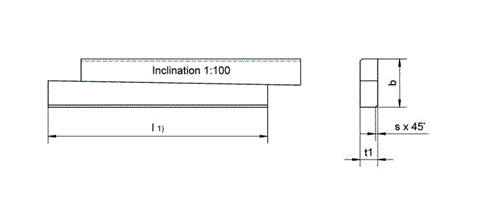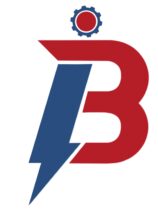
Key attributes of the design:
- Used for large shafts in heavily loaded applications.
- A tangent key transmits torsion in one direction only, by means of compressive force only. This allows to increase the load transmission capability of the assembly.
- A tangential key consists of two tapered keys mated together.
Shortcomings of the design:
- When a single tangential key assembly is chosen, the torque can be transmitted in one direction only. Therefore, two tangential keys, placed 90° to 180° apart, are required for bi-directional rotation applications.
- Assembly is more complex when compared to standard sunk key designs.
Machining:
- Shaft and hub are typically machined to a transition fit tolerance.
- Typically, the hub or coupling is machined by keyway slotting or wire erosion.
- Tapered keys are machined with 1:100 slope and Ra finish of 32 or better.
Assembly:
- Correct fitting of the keys is critical to the integrity and long-term reliability.
- The keys are typically hand fit by verifying contact with transfer blue.
- After correct fit has been established, both sets of keys are hammered simultaneously, or equally into position.
- The keys are then locked into place with a pin or other method such as set screw or tack weld.
Typical drive applications where it is used:
- Large mixers, steel rolling mills.
- Grinding mill drives, mining hoists.
The Bottom Line
Although not common, the tangential key arrangement remains a viable option for large drive applications involving high torque/torsion loads.
